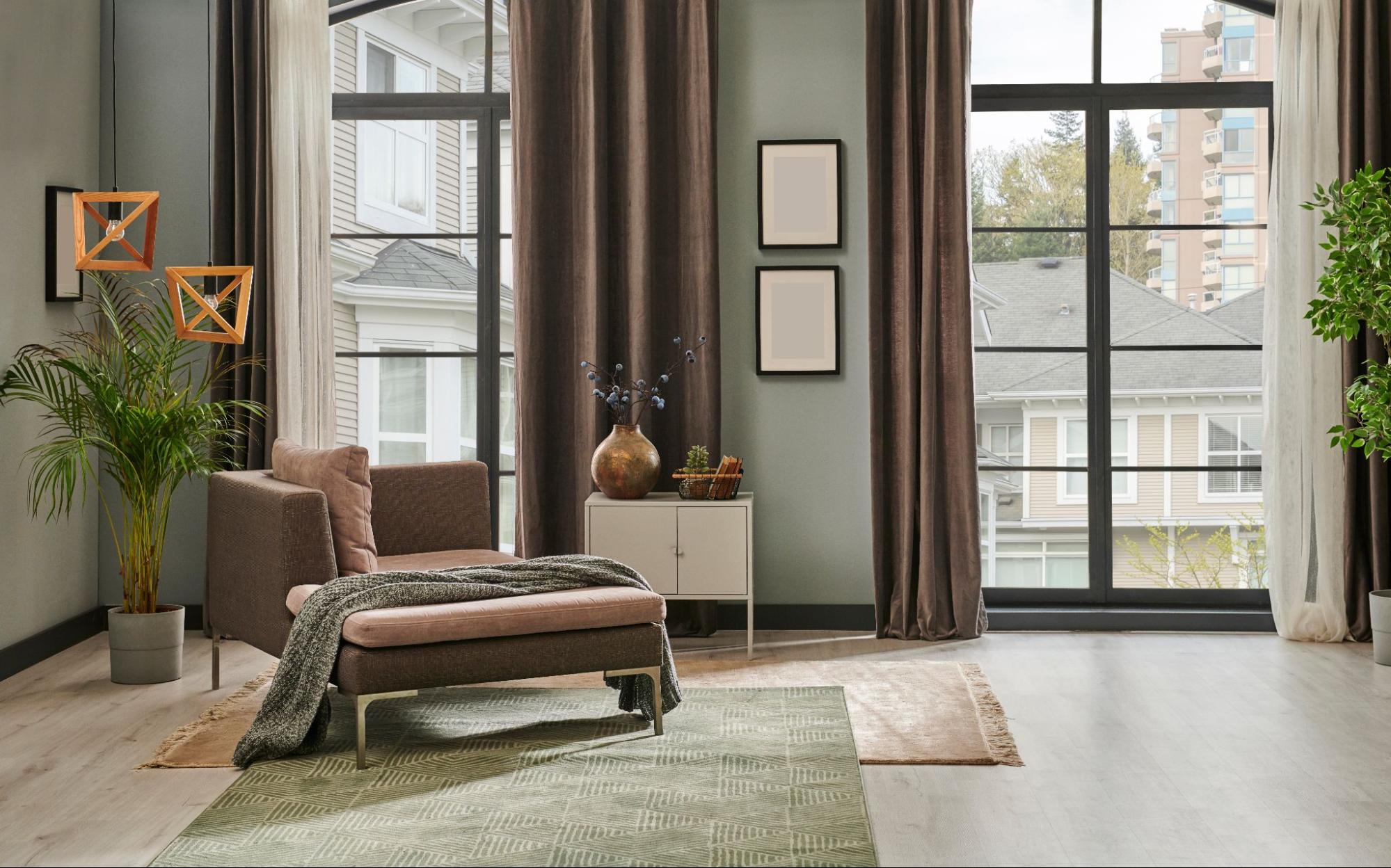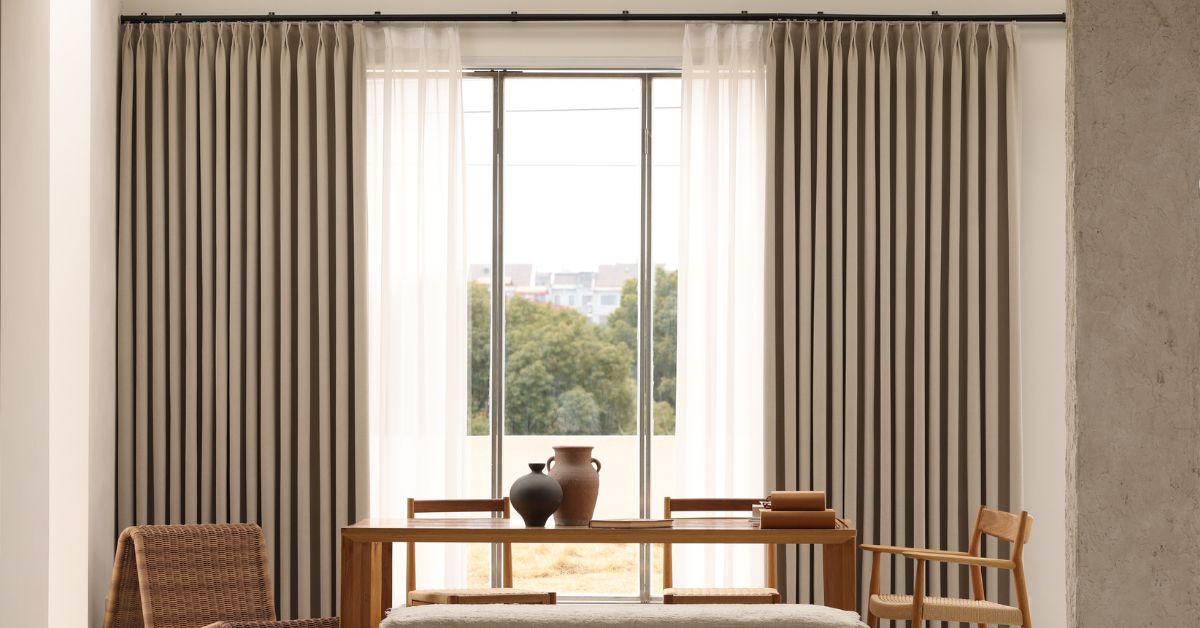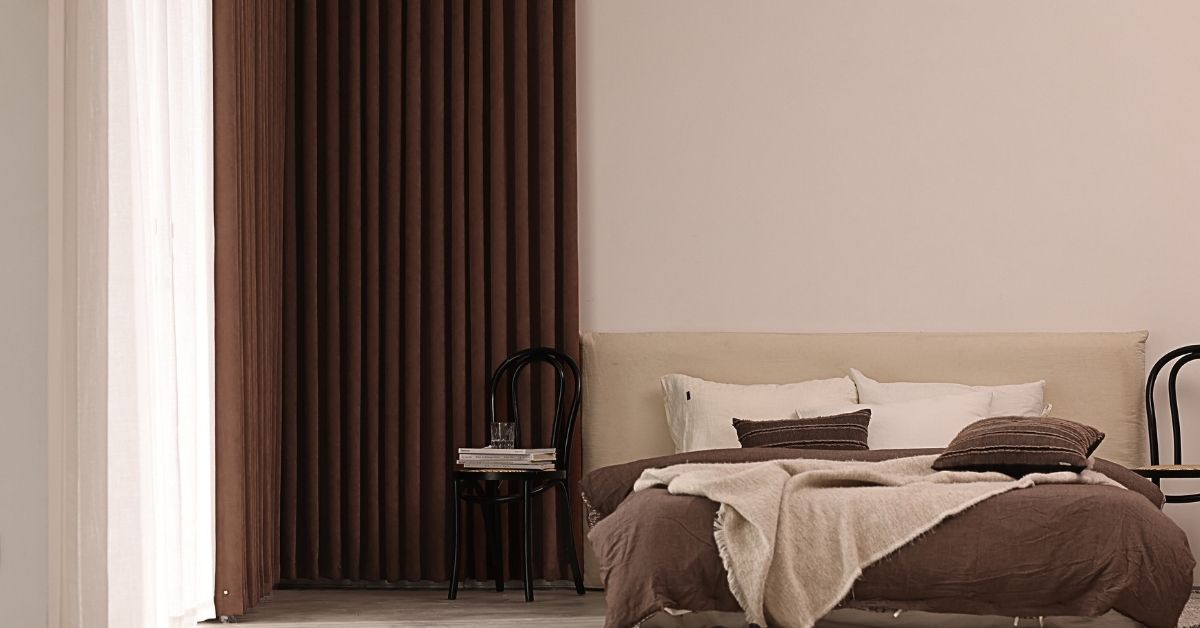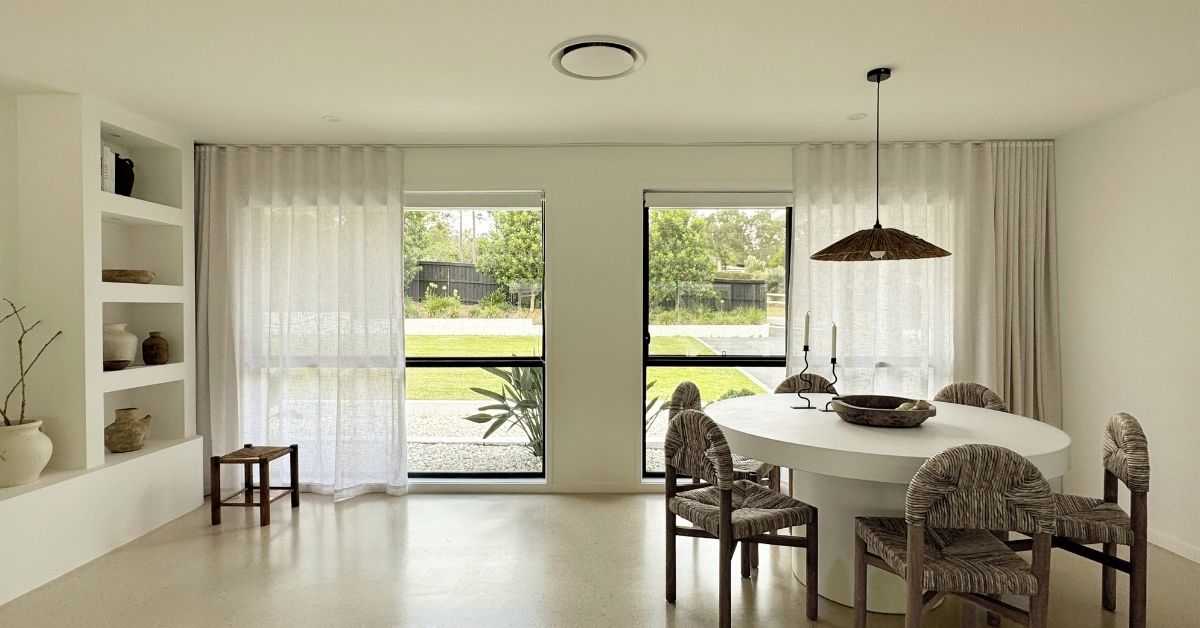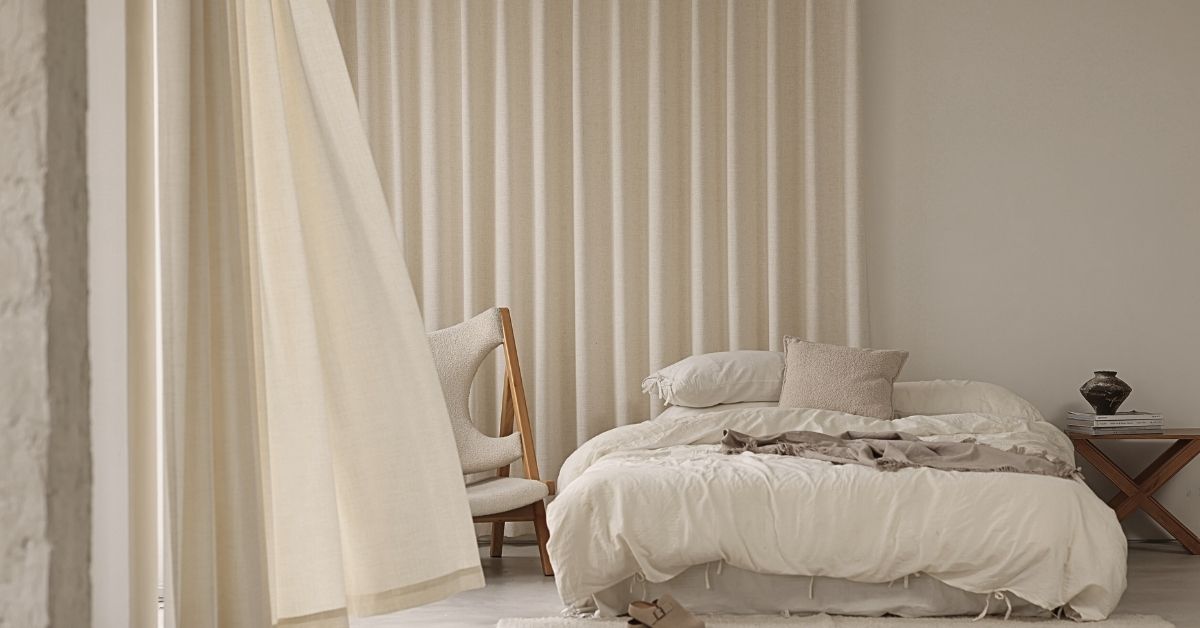When it comes to buying new curtains, the first thing that you’ll generally need to consider is whether you’re looking to hang your panels off of curtain rods or curtain tracks. Truth be told, there are a fair few differences between these two, which is precisely why all you DIY home designers can benefit from taking a little bit of time to weigh up the pros and cons of each style.
For starters, curtain tracks can be a lot easier to operate than their rod counterparts. But sadly, that smooth movement may come with the drawback of accidentally breaking some of the plastic gliders that are installed along your curtain track, which is coincidentally why many recommend going for metal track systems over cheaper plastic ones. Contrastingly, curtain rods can offer a sleeker, cleaner look to your windows that pairs particularly well with modern contemporary or minimalist interiors. The downside to curtain rods, however, is that they can be more finicky to operate and can only really be operated manually or by hand.
We’ll be taking a closer look at the benefits and drawbacks of both of these unique curtain hanging methods today, just to help any home designers out there find the perfect system for their own windows. Read on to keep your curtain hanging and styling project on the right track!
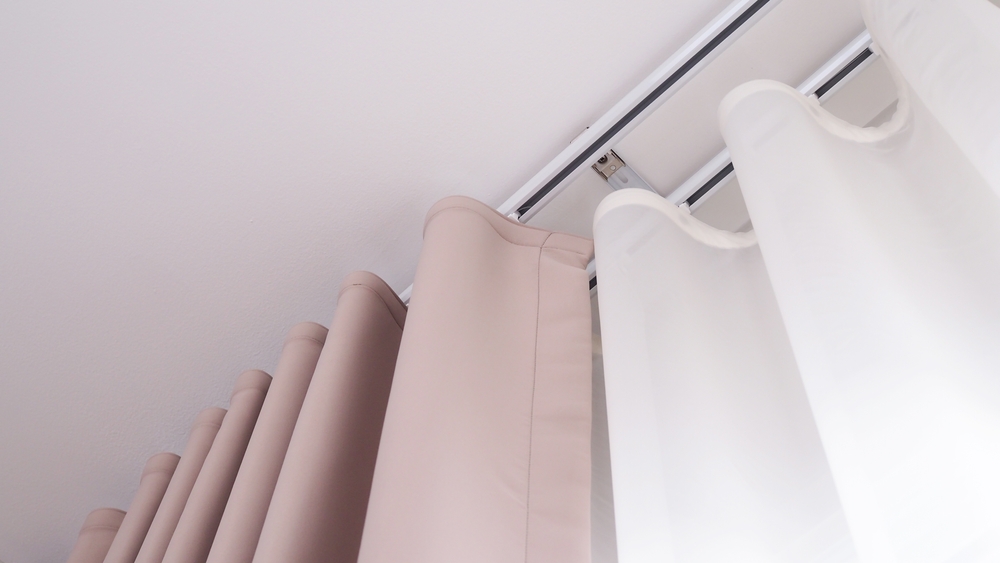
What Are Curtain Rods?
Let’s start with assessing the key differences between these two options for hanging your curtains, beginning with the trusty curtain rod. As its name suggests, the curtain rod is a solid, cylindrical rod that’s installed above your window frame for the purpose of hanging curtains.
Generally, curtains are installed directly onto the curtain rod itself, meaning that there are no additional parts like you’d see on a curtain runner. For those who do want the elegance of a curtain rod with all the convenience of a curtain track, however, there is the option of adding curtain rod rings for a timeless take on this modern curtain hanging style.
What Are Curtain Tracks?
Unlike curtain rods that usually consist of a single rod or bar for hanging curtain panels, curtain tracks are made up of a number of different components. These components are a runner and brackets that’s then fitted with a number of gliders, designed to hold a curtain up from its own hooks. Curtain end caps are also installed to help keep the gliders on a curtain track in place, effectively ensuring that a curtain panel doesn’t fall off of its track.
How To Style Your Curtain Rods
Now let’s explore how best to style your curtain rods with your selected curtain panels. Before we jump in, however, it’s important to note that not all curtain styles can be hung directly onto the curtain rod itself. This particular hanging method naturally only works with select curtain header styles that don’t require a curtain track system.
This is why some of the most popular header styles that you’ll see being hung on a curtain rod include modern eyelet curtains and tab top or reverse tab curtains. As both of these styles are known for their uniform hang and generally monochromatic colour schemes, they’re well-suited to modern contemporary homes.
Keep in mind that a curtain rod that has had rings installed can also be used to hang romantic pinch pleat and pencil pleat curtains. So installing rod rings to your curtain rod can provide more options surrounding which curtain styles you can pair with your selected rod style. Simply put, if you’re looking to curate contemporary interiors that are heavily inspired by romantic or traditional aesthetics, then adding rings to your curtain rod can help effortlessly meld the old with the new in an elegant way.
How To Style Your Curtain Tracks
As we mentioned, curtain tracks are usually paired with classical curtain styles with plenty of folds, like pinch pleat or pencil pleat curtains. This is primarily because these curtain panels can’t really be installed directly on a rod due to their heavy pleating.
There are actually more types of curtain track systems available today, meaning that going for a curtain track over a curtain rod may just provide you with more options regarding how you style and even use your curtains at home. For instance, motorised curtain tracks are becoming an increasingly popular alternative to traditional, manually-operated curtain tracks, as these modern systems allow homeowners to automate the drawing of their curtains every day. With a motorised curtain track system, you can enjoy waking up with the sun without having to manually open the curtain yourself!
Fans of curtain track systems can also take advantage of the extra smooth glider systems that are available to home designers today. With these new-and-improved track systems, you can enjoy a more smooth and satisfying movement and even perfect silence when operating your curtain track! For either motorised or superglider tracks, we highly recommend using a similarly modern curtain style, like going for a neutral toned pinch or pencil pleat drape. Using a modern colour palette for these traditional curtain styles can help add a touch of dynamism to your high-tech curtain track system.
Curtain Rods Vs. Curtain Tracks: Which Is Better?
All things considered, there are definitely strong selling points for both curtain rods and curtain tracks, meaning that no mode is set to be better than the other. In truth, choosing between these two curtain hanging styles is really all about considering which one your selected curtain panels would benefit from the most. If you have a pinch pleat or pencil pleat curtain, chances are you’ll need to hang these panels on a curtain track for smooth manoeuvrability. As for eyelet and reverse tab curtain styles, these are always going to be hung directly onto a curtain rod, as they’re designed to do so.
Want to find the right curtain hanging method to suit your home? Browse our full range of curtains and blinds as well as all of our curtain accessories right here at Quickfit!




